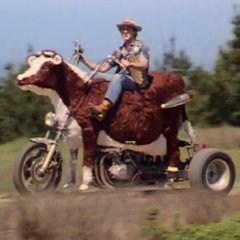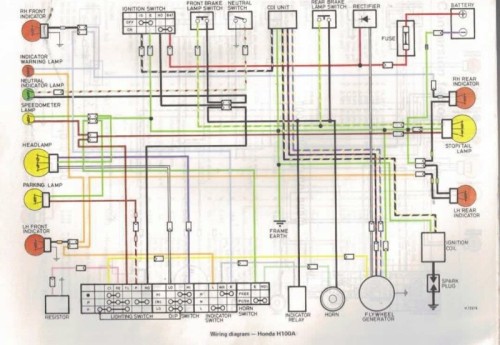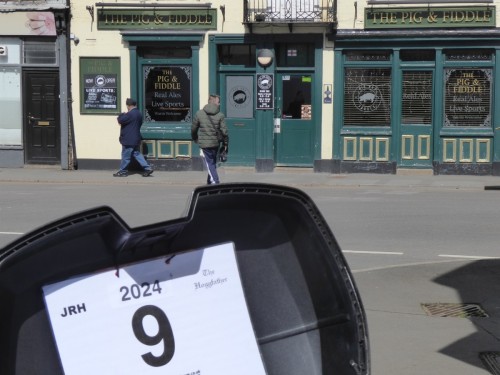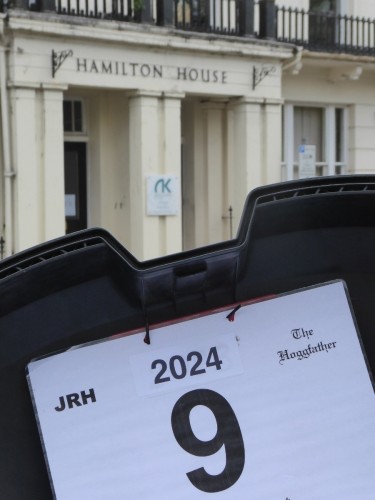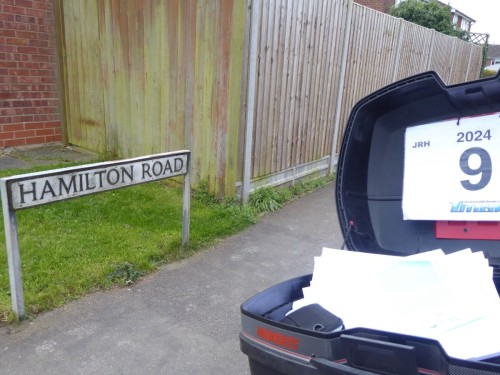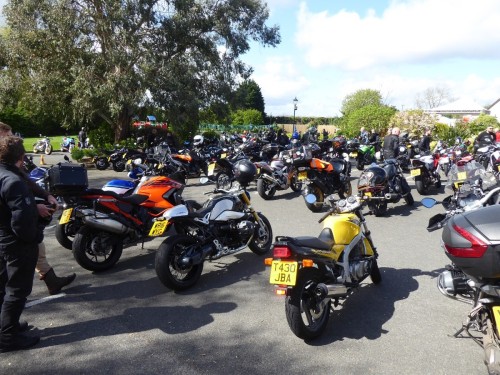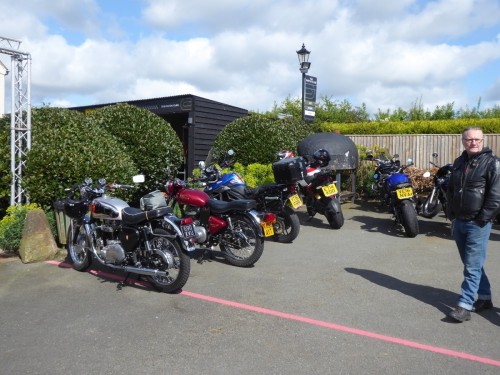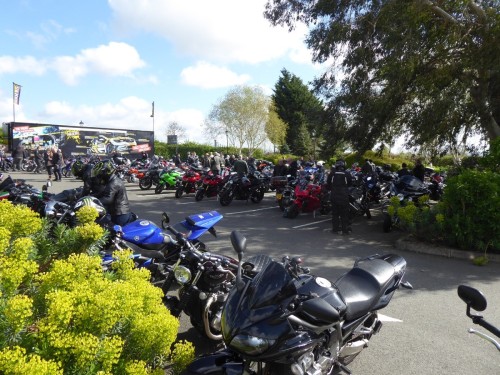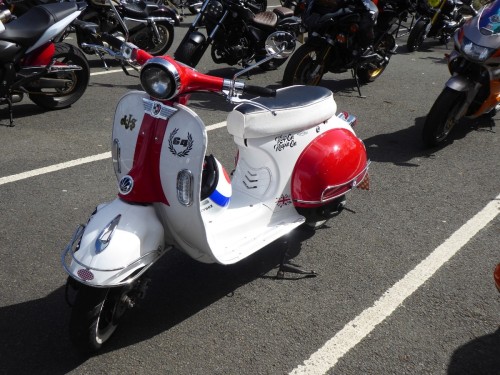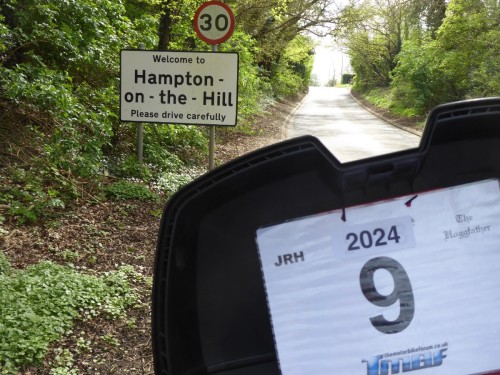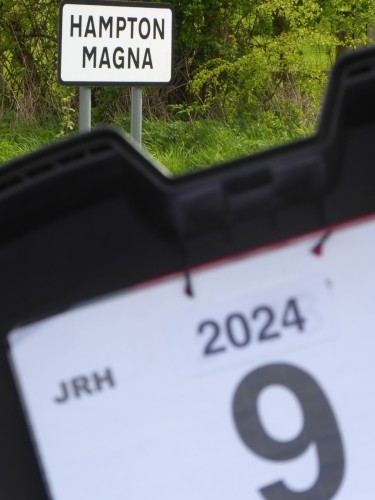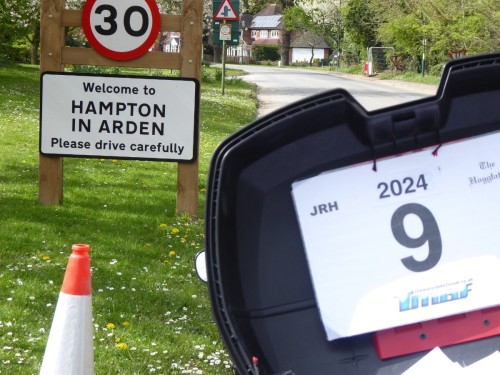-
Posts
2,939 -
Joined
-
Last visited
-
Days Won
16
JRH last won the day on April 16
JRH had the most liked content!
Personal Information
-
Bike(s)
(Had GP125, GSX250, Kwak GT750, GPX750R) now Bandit1250
-
Location
Warwickshire
Challenge Score
-
Challenge Score 2024
160
JRH's Achievements
920
Reputation
-
@RideWithStyles not all in-line 4’s are peaky. My 1250 has max torque coming in at around 3000 revs. 6th gear pulls from 25mph to license loosing speeds. Can ride it like a twist and go, no need to change gears or use the gears and really fly. Then with a red line at 9500 the engine is never stressed, bullet proof and will go on for many many miles. this is the advantage of large capacity engines tuned for torque as a quick sports tourer. Fair enough 150+ hp machines Will eventually leave me behind but by then we will be in seriously high speeds.
-

Honda H100A - Electrical Help (Please)
JRH replied to eugeroic's topic in Old Motorbikes, Projects and Restorations
Hi @eugeroic and welcome. Why not pop into newbies and introduce yourself. Sounds like you need a Haynes manual to help. But in the mean time an electrical diagram may help you. -

BSA B33 1952 Fuel and Main Jet
JRH replied to david2520's topic in Old Motorbikes, Projects and Restorations
Saw this on another forum. pros and cons of Ethanol. A question that is constantly being asked right now, particularly with the introduction of E10, is whether Ethanol based fuel will harm my bike? As a previous industrial chemist and owner of several classic bikes and cars I decided to address this controversial subject and provide answers to many of the questions being asked. Hopefully, this will lead to an explanation on the consequences of using Ethanol based fuel and address what changes need to be made and what don’t. Using Ethanol based fuel basically comes down to a case of damage limitation. Some of the questions being asked right now include: Will Ethanol based fuel corrode my fuel tank? Will Ethanol based fuel corrode my carburettor? Will Ethanol based fuel attack my fuel pipes? Will Ethanol based fuel attack rubber seals and gaskets? Does 2 stroke oil mix properly with Ethanol based fuels? Does Ethanol based fuel increase the risk of engine seizures? Does Ethanol based fuel give the same performance as non-Ethanol based fuel? How long can Ethanol based fuels be stored for? Will a fuel stabiliser work to prevent moisture absorption and increase storage life? Can Ethanol be removed from fuel? Are there any non-Ethanol fuels still available? The main problem with Ethanol is that it is hygroscopic which means that it has an affinity to absorb moisture from the air. It is this water that causes the ensuing damage since it will, over time, corrode many of the metal parts it comes into contact with. Needless to say, the actual conditions required for the fuel to absorb significant levels of moisture must be considered. The greater the headspace in the fuel tank, the greater the chance of moisture absorption due to increased surface area of exposed fuel. Remember that fuel tanks are essentially vented to atmosphere, as are gravity fed motorcycle carburettors. Moreover, the higher the relative humidity, the greater the chance of moisture absorption. Excessive fluctuations in air temperature can also cause condensation to form which is quickly absorbed by the Ethanol. The best way to reduce moisture absorption to an absolute minimum is therefore to keep the tank topped up to the brim wherever possible and avoid exposure to severe temperature fluctuations. Keeping the bike under cover helps significantly here. Now onto the damage caused by absorbed moisture in the fuel. The main question is whether the absorbed moisture causes corrosion of metal parts? If the fuel is used before moisture build up becomes significant then corrosion damage is unlikely. However, if the fuel is left for any length of time then excessive moisture build up will start to cause corrosion damage particularly to steel and aluminium parts. Fuel tanks, fuel taps and carburettors are the main problems here and it is not uncommon to witness significant corrosion of carburettor internals when left standing over time containing Ethanol based fuels. Soldered components such as carburettor floats are also quite vulnerable. Ethanol based fuels should be used within a couple of months at the very most and drained from the tank and carburettors if left any longer than this. In any event, modern fuels do not store very well since the octane rating deteriorates if left for any longer than this. Ethanol based fuels are also more unstable than non-Ethanol fuels. Now onto rubber components. The term rubber is a bit of a misnomer. Seals, gaskets and pipes are made from a wide range of elastomers including Nitrile (Buna N), Neoprene, EPDM, Viton etc. etc. and this is where the problem lies. Whilst some elastomers exhibit very good resistance to Ethanol, many do not. Generally, motorcycle fuel pipes are made from neoprene which is extremely resistant to Ethanol so no problem there. However, many seals and gaskets are made from Nitrile (Buna N) which has very poor resistance to Ethanol. Ethanol can cause these seals and gaskets to swell over time whilst some elastomers can become quite brittle. It’s best to swap out any problematic seals and gaskets in the fuel system (taps, carburettors etc.) for a more resistant material, though this is easier said than done since many manufacturers and OEM’s do not state what material has been used in the manufacture of these items. This is a difficult one and it’s often a case of suck it and see. If Ethanol based fuels appear to be causing problems with seals and gaskets it’s best to replace the affected items then avoid Ethanol based fuels altogether. Unless, of course you can identify and obtain Ethanol resistant seals and gaskets made from more resilient materials which exhibit very good resistance to Ethanol. Most modern engine and fuel systems (post 2000) have already been manufactured incorporating seals and gaskets made from more resilient materials. A popular misconception about Ethanol based fuels is that they can increase the risk of engine seizure. There is no real credible evidence that Ethanol based fuels increase the risk of seizure despite the fact that a 10% Ethanol addition will have a slight (2.6%) leaning effect. Moreover, 2 stroke oils mix with Ethanol based fuels just as well as they do with non-Ethanol fuels. The idea that Ethanol based fuels can contribute to engine seizure is a myth that should be ignored. However, it should be noted that the calorific value (energy content) of Ethanol is less than that of Petrol so we can expect a small difference in performance when using Ethanol based fuels though hardly significant with 10% Ethanol (E10). In some countries like Australia where 85% Ethanol (E85) fuels exist this has become more of an issue but UK fuels currently contain a maximum of 10% Ethanol so not really an issue. Another common question is whether a fuel stabiliser will work to prevent moisture absorption and increase storage life? In a nutshell, No. Fuel stabilisers do not work to prevent moisture absorption and do very little to retain the octane rating of a fuel during long term storage. Stay away from them, you are wasting your money! There are some people out there suggesting that Ethanol can be removed from fuel by mixing water with the fuel to soak up the Ethanol and subsequently draining off the remaining fuel layer. This does actually work but it’s all a bit of a faff and then there’s the issue of disposing of the remaining Ethanol/water mixture safely. It’s better to try and source a non-Ethanol based fuel in the first place such as Esso Synergy Supreme+ Unleaded 97 or Synergy Supreme+ 99. These are still to be made available in the UK so I am told. Although the forecourt pumps have E5 labels on them, Esso Synergy Supreme+ 99 is actually Ethanol free (except in Devon, Cornwall, North Wales, North England and Scotland). Also, Super Unleaded will still be available for another 5 years which contains only (upto) 5% Ethanol. The less Ethanol the better. I think we’re getting the picture now. Another option, should an owner wish to keep a bike fuelled up during longer term storage is to consider filling up with an Alkylate fuel which is Ethanol free and is very stable during long term storage. This is available and sold under the brand name Aspen in the UK and whilst it does work well it is very expensive. Indeed, there are definite consequences when using Ethanol based fuel in older engines. In summary I would recommend using non-Ethanol based fuel where available or look out for Super Unleaded which contains only 5% Ethanol. Where it is not available, I would recommend that anyone using Ethanol based fuel keep it in the tank only during the active season when the bike is frequently being started and run to ensure that the fuel does not stay for too long in the bike. All the while, keep a watchful eye on any seals and gaskets within the fuel system and ensure that fuel pipes are made from neoprene. It’s easy enough to source neoprene fuel pipe and it’s not expensive. When the time comes to lay the bike up, ensure that all Ethanol based fuels are drained from the tank and carburettors and flush them through with paraffin. It is the lesser of two evils since fuel taps and carburettors are best stored filled with fuel to prevent seals from drying out but not with Ethanol based fuels. If possible, fill the tank with enough Alkylate (Aspen) fuel just to be able to flood the fuel tap and carburettor for Winter storage. Other than that, a light coating of 2 stroke oil mixed with a little paraffin can be used to coat the inside of the fuel tank to prevent corrosion. I hope this information throws some light on the great Ethanol debate and is helpful to some of you. Info credit goes to Chris Robinson from the Yamaha FS1-E Owners Club. -

BSA B33 1952 Fuel and Main Jet
JRH replied to david2520's topic in Old Motorbikes, Projects and Restorations
Hi. @david2520 Ethanol free if you can get it. Failing that E5. the ethanol attacks some rubber based and plastic components. So watch out for fuel lines being perished. i have also read somewhere ethanol can attack carb floats. Ethanol is also a greater solvent than petrol so it can loosen gunge in the fuel lines and tank which can cause blockage issues. It is also hygroscopic some when left in the tank can attract water vapour which can cause corrosion. basically run it. Try not to leave fuel in the lines. Keep an eye out for bits being perished, but most of all, enjoy it. -

Challenge 2024 Challenge 2024 - Map and Pictures ONLY
JRH replied to Hoggs's topic in General Rideouts/Meets
-
Hi and welcome. Didn’t have a 250 superdream, had a Suzy GSX250.
-

Challenge 2024 Challenge 2024 - Map and Pictures ONLY
JRH replied to Hoggs's topic in General Rideouts/Meets
-
Well when starting in the mornings occasionally the display dims and sometimes the clock resets. So plugged in the Optimate overnight. Ends the charging session with Amber and Green lamps lit. Optimate manual says replace soon. So day was buy and fit new battery. I have had the bike since 2015 and never replaced the battery.
-
Little run out to day, first to the Piston Club @the stag Stratford on Avon. Then off to Alvechurch then back home. the piston club was heaving.
-

Challenge 2024 Challenge 2024 - Map and Pictures ONLY
JRH replied to Hoggs's topic in General Rideouts/Meets
Posher -

Challenge 2024 Challenge 2024 - Map and Pictures ONLY
JRH replied to Hoggs's topic in General Rideouts/Meets
Starting on: All Things Hoggs #1 HAMton on the hill All Things Hoggs #2 HAMton Magna All Things Hoggs #3 HAMpton in Arden. -






